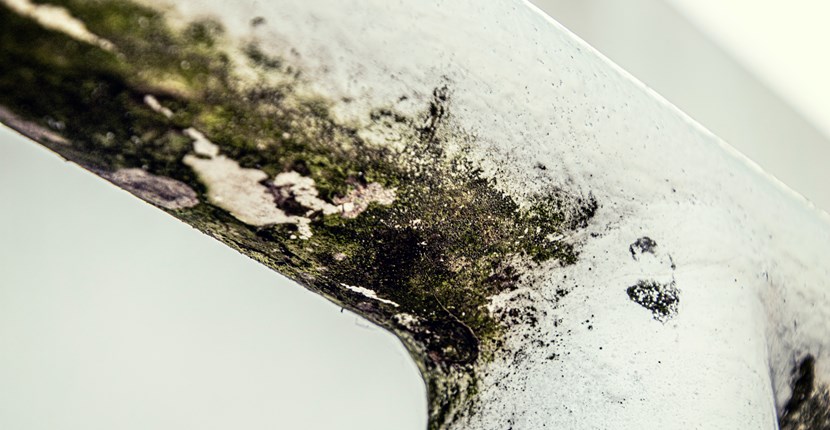Posted on 22 08 2022
Mould is the Enemy

On some scale, mould spores are in every home. But with extensive mould contamination, these can build to a level that causes serious health issues for some people and property damage. All homeowners should take preventative steps to restrict mould growth.
Mould is very common in houses. It can enter through doors, windows, vents, heating and air conditioning. When the mould spores settle in wet places, they grow. Some materials like cardboard, wallpaper, carpets, and wood are conducive to mould growth.
Once mould takes hold it can cause significant structural damage. The mould spores consume organic materials. They eat away floorboards, insulation, and other building materials.
Exposure to mould spores can cause allergic symptoms such as watery eyes, runny nose, sneezing, itching, coughing, wheezing, difficulty breathing, headache, fatigue and even long-term illnesses.
The Tenancy Tribunal takes to mould and mildew very seriously. They have little tolerance with landlords or tenants who fail to control mould growth. There have been cases where the tribunal has ordered landlords to pay thousands of dollars.
As part of the Healthy Homes Standards, landlords must have efficient drainage to remove stormwater, surface water and groundwater. Rental properties with an enclosed sub-floor space must also have a ground moisture barrier.
Tenants also have responsibilities. They must keep the house clean and tidy and in a condition that doesn’t encourage mould and dampness.
How to keep mould out
There are some key steps for controlling mould growth. Wet, humid spaces are breeding grounds so it’s important to repair leaks quickly and keep humidity levels between 30% and 50% throughout the day. Make it a practice to inspect your house regularly for evidence of water leaks or visible mould and remedy any defects immediately.
- Fix Leaks
Flooding from damaged water pipes, leaky roofs or windows, burst water cylinders, overflowing guttering or even seeping pot plans can create dampness where mould will grow. It’s important to check for leaks often. If left, they can create damage in a short time. If you have a flood, make it a priority to thoroughly clean and dry the affected area after the leak is repaired.
- Lower Humidity
Good ventilation is the key to lowering humidity. Exterior venting exhaust fans in wet areas like bathrooms and kitchens and on clothes dryers removes moisture at its source. But even with these, it’s advisable to keep kitchen and bathroom doors closed while those rooms are in use to prevent moisture from travelling to colder rooms and condensation.
It may be necessary to use dehumidifiers in the winter months and wipe condensation off walls and windows.
Make a point of identifying where moisture is entering your home and reduce these where possible. Wet clothes, cooking pots without lids, pot plants and un-flued gas heaters are all moisture contributors.
- Keep spaces Aired
A well-aired, ventilated house is crucial to prevent mould. Open doors, windows and curtains wherever possible to allow airflow that will remove dampness. Try adding window stays in bedrooms to add extra ventilation.
And avoid creating confined spaces and crevices where dampness can occur. It helps to either keep wardrobe doors ajar or install a vent. Leave beds and furniture slightly away from walls and keep mattresses or other mould conducive materials on the floor.
- Limit and keep clean Mould Conducive Materials
Some materials throughout the house will be naturally prone to mould. Carpet is one of these and is best not fitted in damp rooms like bathrooms or basements. Wet bathroom walls will develop mould if not kept dry between uses. It's good practice to wipe shower walls dry every time and wash shower curtains regularly.
An old stack of cardboard or wood in the corner of the laundry or internal garage may seem harmless. But these materials feed mould spores when they are damp. Make a point of removing them before they cause a problem.
- Keep Room Temperatures Warm
The Healthy Homes Standard requires rooms to be heated to a minimum of 18° (as recommended by the World Health Organisation). This avoids dampness which could grow mould. It’s important to choose the correct heating. Some heaters are also moisture contributors. It's also important to keep heaters clean and maintained for efficiency.
- Create Landlord-Tenant collaboration
Successful mould prevention in tenanted properties relies on the joint effort of landlord and tenant. Even the Tenancy tribunal recognises that both parties have a responsibility. Take the time to facilitate a discussion and agree on a plan for collaboration. Landlords may even want incentives for tenants who work hard to keep their homes mould-free.
Greenside Energy Solutions can help you check and specify ventilation, heating and insulation to ensure you have the best protection against mould.